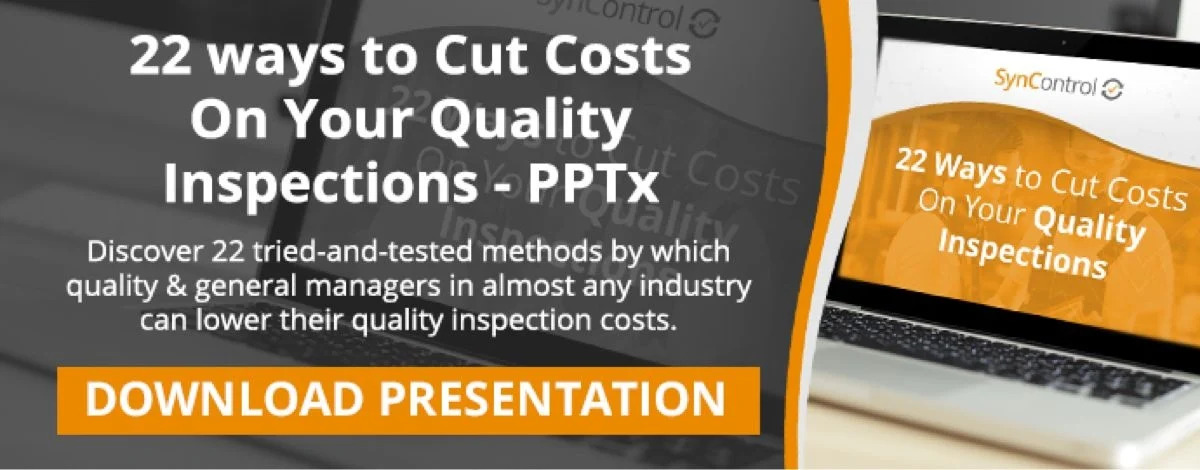
Online retailers have had to become masters at data analytics. They have an ocean of data and can make experiments & get feedback quickly. They keep iterating on how to get visitors to shop more and come back more often.
At the other extreme, many manufacturing and purchasing organizations still live in the pre-digital world. They “touch” many data that are, unfortunately, not collected in a database for analysis.
That’s a pity. Using relatively simple statistical tools can provide many actionable ideas for cutting defect rates, supplier risks, and operational costs. Machine learning should come much later.
5 typical examples of analyses that drive business results
When examining the quality data, you can try these 5 analyses to push forward suppliers in order to get better results than before:
1. Show suppliers top defects and require a corrective action plan
Show each supplier their top 10 defects by product category, and require a corrective action plan for at least one of the top 3 defects. (You might be the only one of their customers to give them that kind of feedback, so you are likely to get their attention.)
Benefit: focus suppliers on what they need to improve. Compare the results over time, for accountability. Receive better quality products/parts.
2. Discover that products made in one city are less risky than those from another
You find that, when product category ABC is made in city 123, the risk is much higher than when they are made in city 456.
Benefit: allocate inspections during production, in addition to the final inspections, in city 123. You know it is riskier, so allocate more resources. (And, conversely, if the risk is much lower, remove resources in city 456.)
3. Discover that products made in one factory are less risky than those from another
You find that, when product category ABC is made in factory 123, the risk is much higher than when they are made in factory 456. The average percentage of defective goods are known, and it can lead to a quantification of the difference in cost of poor quality (e.g. returns by customers).
Benefit: the purchasing team can take that into account in their total cost of ownership, as a higher cost of quality for factory 456. This may justify the use of a better factory with a higher price.
4. Test different first article inspection methods for a large product category
For a big product category, do A/B/C tests on the way to run first article inspections:
- A is “focus only on the product, check more pieces, including packing if possible”,
- B is “spend 30% of the time checking the product and it 70% of the time checking processes & systems”,
- C is “Skip the first article inspection”.
Then, look at the results of the final inspections and other feedback (complaints etc.) after shipment.
Benefit: discover what approach led to the best results, and standardize it across that category. Keep your costs the same and reduce risk, or (if the data imply that’s realistic) cut that inspection altogether.
5. Discover that certain factories cause a higher risk in the run-up to Chinese New Year
You find that the risk is much higher when certain factories manufacture products in the 2 months leading to Chinese New Year. You can quantify the extra cost by extrapolating from the difference in defective rates, re-inspections and expedited shipments, etc.
Benefit: run a total cost of ownership analysis, and it might show you that purchasing from other factories with a higher price, or purchasing higher quantities 3 months before October, may be more interesting for your company.
Digitizing quality inspection activities
Our quality inspection app collects a lot of important data (failures, suppliers & factories, cities, order quantities, products…). A lot of insights can already be gleaned by simply looking in our database.
What about the case where a company wants to make the most out of this information?
They collect all data (product attributes & types, development data, dates, order size, factory location, past inspection results, aftermarket complaints…) in 1 database.
They then use Microsoft’s Power BI (which seems to be a favorite of many large organizations) or Salesforce’s Tableau for analyzing relationships between data, leading to cost-saving conclusions.
******
Have you benefited from analyzing data about your suppliers and using the results to spur them to make positive changes to quality? Let us know how in the comments, please.
If you’re interested in reducing costs, you will also like this eBook about cutting quality inspection costs…


